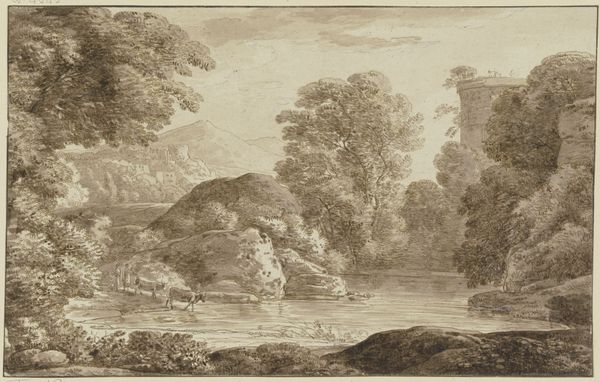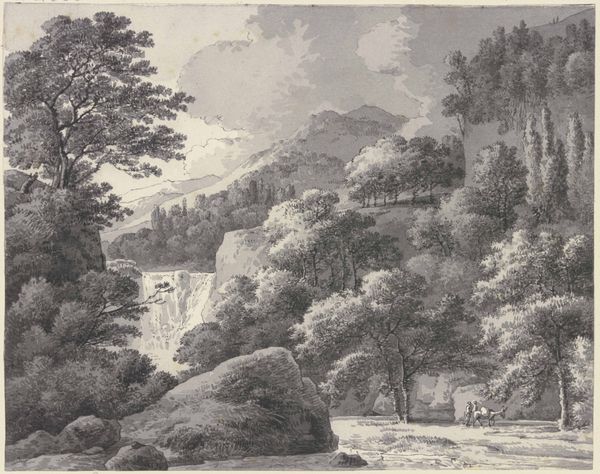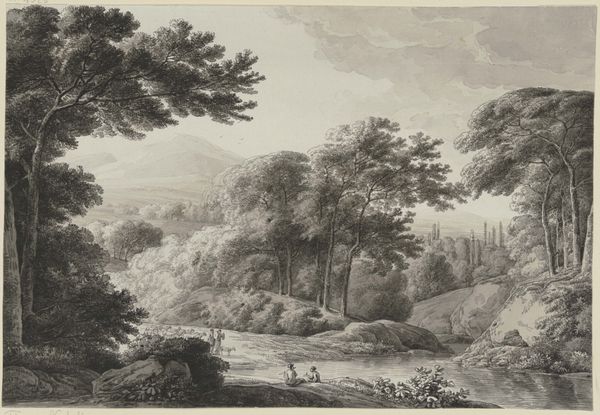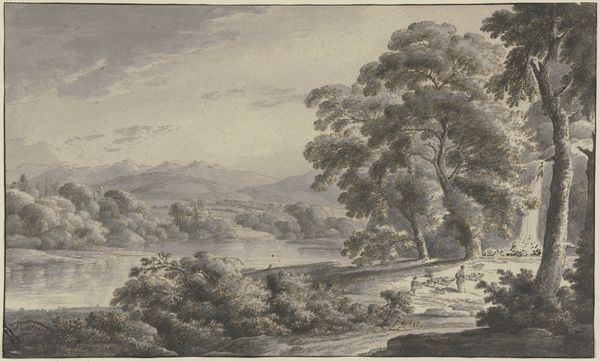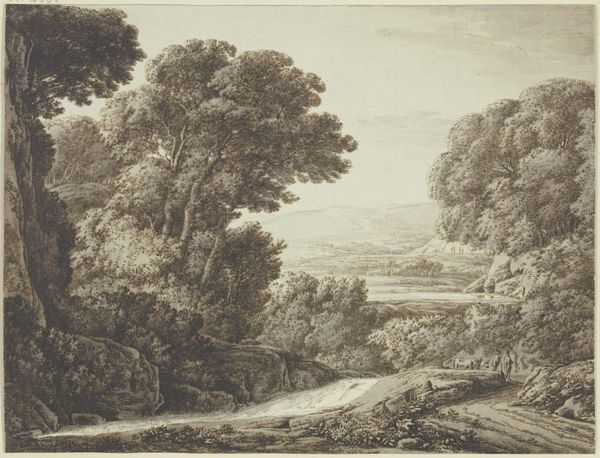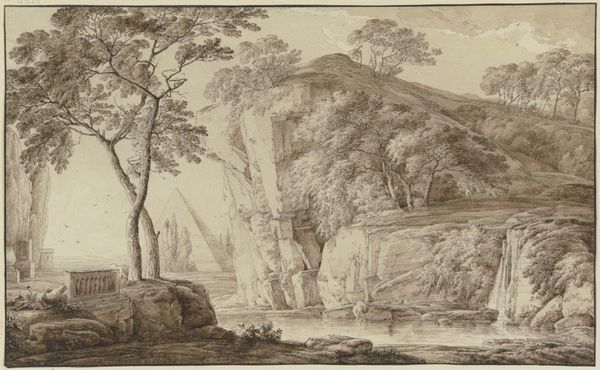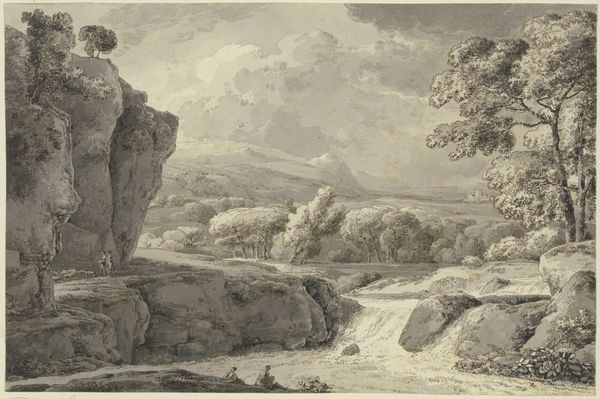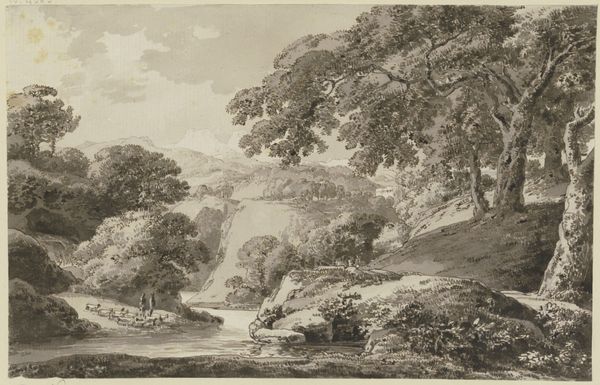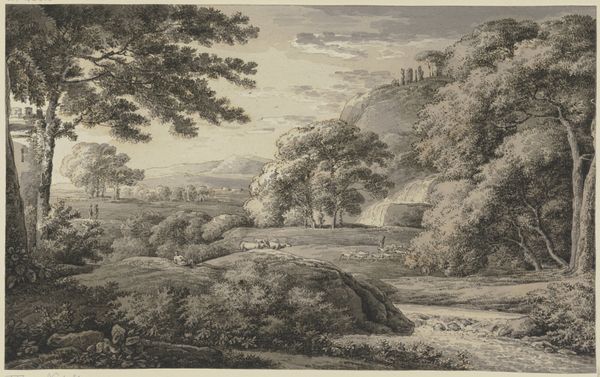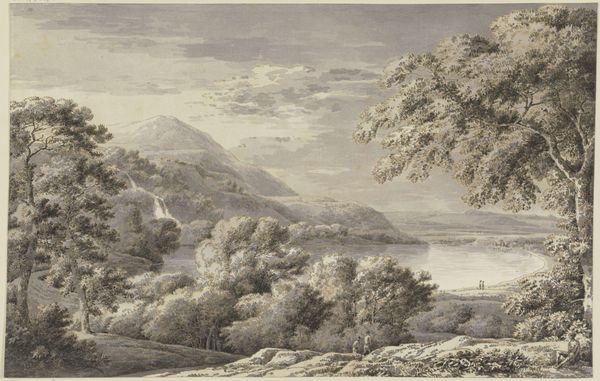
drawing, ink, pencil, charcoal
#
drawing
#
landscape
#
charcoal drawing
#
ink
#
pencil drawing
#
romanticism
#
pencil
#
charcoal
#
charcoal
Copyright: Public Domain
Curator: Let's take a closer look at this landscape drawing by Franz Kobell entitled "Flusslandschaft, rechts Felsgrotten," which translates to "River Landscape, Rock Grottos on the Right." Editor: It evokes a certain calmness, yet it's almost eerie, don’t you think? The muted tones and the way the light catches the rocks give it a dramatic flair. I see a story about humanity and our small place within the sublime, untouched corners of nature. Curator: Indeed, the Romantic sensibility is palpable here. Kobell's work exemplifies a growing fascination with nature and the sublime that took hold during a period of significant political and social upheaval. We see the legacy of Romanticism’s influence in the landscapes, literature, music and overall emotional climate. The relatively recent invention and then proliferation of printmaking led to these sublime landscape ideas rapidly spreading across Europe and influencing public and elite sentiments toward nature and national identity. Editor: Those tiny figures near the water – are they interacting with each other or with the viewer? They really make me question the artist's perspective, his relationship to those human figures and what their position in this great vast natural scene tells us about German romanticism and philosophy at the time. Curator: Considering the probable lack of modern, established notions of “identity politics” in Kobell’s moment, the artist may simply be using figures as tools within the artwork for exploring humanity’s general place in nature. The figures and even the nearby structures are small and blend well with the scene to offer this sense of blended natural existence and scale. It is difficult to apply our understandings of race and gender onto artists in eras that may not have had explicit understanding or acknowledgment of these ideas. But by discussing that in art today, we can draw better meaning from our cultural evolution, by comparing sentiments about race, gender, politics and culture across history and assessing its potential future. Editor: A beautiful reminder that viewing art across different perspectives fosters mutual growth. Thank you for shedding some light on the social context and artistic trends of this captivating drawing. Curator: And thank you for encouraging us to view Kobell's landscape through an eye for contemporary concerns!
Comments
No comments
Be the first to comment and join the conversation on the ultimate creative platform.
